
All categories
Featured selections
Trade Assurance
Buyer Central
Help Center
Get the app
Become a supplier

(16392 products available)

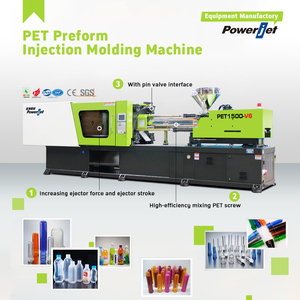

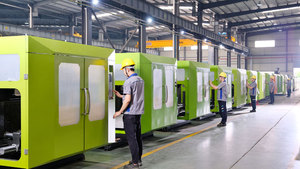







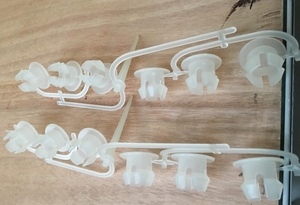


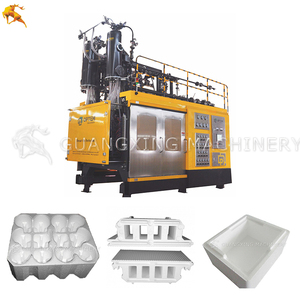

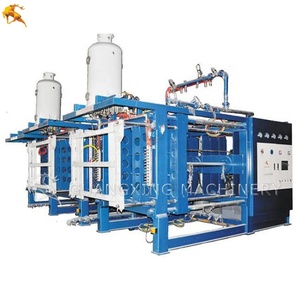










Market Overview: The global market for injection molding machines, including vertical injection machines, has demonstrated robust growth. As of 2023, the market was valued at approximately USD 11.8 billion, with projections to reach USD 15.6 billion by 2030, reflecting a compound annual growth rate (CAGR) of 4.1% during this period, according to Global Industry Analysts. Specifically, the vertical injection segment is anticipated to benefit from the increasing demand for precision and efficiency in manufacturing processes across various industries. The U.S. market, valued at USD 3.1 billion in 2023, is poised for substantial growth, particularly as manufacturers seek to enhance their production capabilities with advanced machinery.
Industry Insights: Key factors driving the growth of vertical injection machines include the rising demand for plastic components in sectors like automotive and consumer goods. The integration of automation and digital control systems in these machines enhances efficiency, reduces waste, and lowers operational costs. Additionally, sustainability trends are influencing consumer preferences, prompting manufacturers to adopt eco-friendly practices, such as utilizing recycled materials. The need for versatility in production is also significant, as vertical injection machines can accommodate a variety of materials, thereby catering to diverse market demands. As industries evolve and consumer behavior shifts towards more sustainable options, the vertical injection machine market is well-positioned for continued expansion, supported by ongoing technological advancements and increasing production requirements.
A vertical injection machine differs from the horizontal injection mold in the arrangement of the injection unit and the clamping unit. A vertical injection molding machine places the injection unit over the horizontal clamping unit. Moreover, it is not just an upside-down version of horizontal injection molding machines but has many technological differences.
Injection and Clamping Unit:
The injection and clamping unit are vertically arranged. Therefore, it directly pins and pushes the mold onto the platens. The gravity helps constant clamping force without adjusting complicated mechanisms.
Vertical molding machines use tie bars to hold the moving and stationary platens. However, some machines may not have tie bars but use a linear motor instead. The motor slides the moving part of the mold back and forth.
Operation:
The injection and clamping unit moves vertically. Therefore, it may not have a complicated injection sequence. Furthermore, the vertical motion makes the production of multi-staged parts easier and shortens the production cycle.
In some models, the two halves of the molds open and close horizontally. These two halves of the molds are called split molds. In this case, the vertical injection unit also has a horizontal moving part that injects the molten material into the split mold.
Some vertical injection molding machines use a rotary table to inject the material and hold the molds. An injection unit moves in a circular motion. The molds are positioned on a table that rotates to hold the static object and inject material into the moving mold.
These machines efficiently produce plastic parts. Using gravity, they can use the same processes and mechanisms for clamping and injecting the material. The shorter process and injection methods make it energy efficient and economical compared to the horizontal injection machines.
Clamping Force:
The clamping force is the force used to keep mold parts closed during the entire injection molding process. The force is measured in tons (or kneading 4.45 newtons) directly related to the size of the machine. For larger machines, the clamping force can be between 2,800 toenails and 5,600 toenails, and it is usually between 2.8 and 5.6 times the machine size.
Molding Area:
The molding area is determined by the vertical injection machine plate. It is the area where the mold will be placed. The area is measured in square inches and is usually between 1,500 and 10,000 square inches.
Molding Depth:
The maximum depth to which plastic can be injected is called the molding depth. The molding depth is determined by the distance between the injection nozzle and the mold height. The molding depth can be between 15 and 30 inches.
Total Power Consumption:
The total power consumption of the vertical injection machine is determined by the size of the machine, motor, heating system, and cooling system. The total power consumption usually varies from 10 kw to 50 kw.
Machine Dimensions:
The machine's size will, of course, affect how much space it takes up at the production facility, how heavy it is, and whether it will fit into the line of equipment being used. Space and weight (usually between 1 and 3 tonnes) are, therefore, important measurement factors when considering the dimensions of the machine.
Deep cleaning:
The entire vertical injection machine needs to be thoroughly cleaned at regular intervals to prevent the buildup of any dirt, debris, or left-over raw materials that can affect molding quality. It's important to ensure that the machine is shut down and cooled before starting the cleaning process. Then, using appropriate cleaning agents and brushes, all parts, including, but not limited to, the feeding section, barrels, injection nozzles, and molds need to cleaned. We can also use purge compounds to remove color and material residue to improve cleaning efficiency.
Lubrication:
Vertical injection machines possess various moving parts, and these need to be regularly lubricated. The lubrication helps avoid excessive friction, smoothen easy movement, and prolong the lifetime of the machine. It is imperative to know the right kind of oil from the vertical injection molding machine's manual and then use it in the right quantity. All the moving parts like guide rails, gears, bearings, cylinders, and others need to be paid special attention to and regularly lubricated.
Adjustments:
A vertical injection machine requires different adjustments after a while to maintain its operational performance efficiently. Adjustments to be made include calibrating the injection speed, pressure, and volume as per the molding requirements, clamping force and pressure adjustment based on the size and thickness of the molded part, settling the alignment of the mold to ensure uniform filling and accurate molding, and adjusting cooling and heating temperatures corresponding to the material used and molding requirements.
Vertical injection machines are widely used in industries that require small parts. They are cost-efficient and great for mass production in the following industries:
Automotive
Automotive manufacturers use vertical injection machines to make automotive parts. The injection machine helps them to create durable electronic casings, clips, connectors, gear knobs, and other small parts. They also produce lightweight automotive components using vertical injection machines. These often replace heavier materials to help reduce the vehicle's overall weight and provide energy efficiency.
Consumer electronics
Consumer electronics use vertical injection machines to make precise plastic parts like smartphone cases, buttons, wearables, and electronic connector housings. The vertical injection machine is preferred in this industry for its ability to produce intricate designs with tight tolerances.
Medical device
Devices like pipette tips, syringe parts, and housings for diagnostic equipment are made with a vertical injection machine. Cleanroom-compatible machines ensure that production takes place in a sterile environment.
Packaging
The packaging industry uses vertical injection machines to produce closures, containers, and lightweight packaging components. The machines are versatile and can be used to create items from rigid containers to thin-walledTechnicalPackaging.
Toy industry
The toy industry uses the vertical injection machine to make intricate toy parts like action figures, toy cars, and other small, detailed toys. The machines help to produce toys on a budget that complies with safety standards.
Optics
Optics producers use the vertical injection machine to make housings, lens caps, and other optical device components that require precision and durability. Durable plastic is used to create optical instruments like microscopes, telescopes, and binoculars.
Lighting
The lighting industry uses the vertical injection machine to make lamp housings, LED light fixtures, and decorative lighting components. Durable plastic is preferred in this industry as it doesn't conduct electricity.
Aerospace
The aerospace industry uses custom vertical injection machines to produce lightweight plastic components for aircraft interiors and electronic housings. It is affordable to make these components in large quantities so the cost per unit is lower.
The following tips should help business buyers make an informed decision when choosing a vertical injection molding machine.
Q1: What are the trends of the vertical injection moulding machine market?
A1: The market is expanding due to the rising demand for eco-friendly practices, leading to more energy-efficient machines. Developments in automation and smart technology are also significant, as machines become more connected and automated, offering greater precision and control. As a further driver, the preference for compact machinery in some industries is boosting sales of vertical injection machines, which have a space-saving design.
Q2: What are the benefits of the vertical injection machine's design?
A2: The benefit of a vertical injection machine is that it allows easy access to molds from above, which is good for both complex molding and quick operator access. This means that vertical injection machines are often easier to service or maintain. Besides, the machines' low-cost production process leads to greater profitability and fewer capital investment risks.
Q3: Are vertical injection machines compatible with all types of plastics?
A3: Vertical injection machines are excellent for many different kinds of plastics, like thermoplastics. But not all of them. Some specialized materials require a different vertical injection machine.